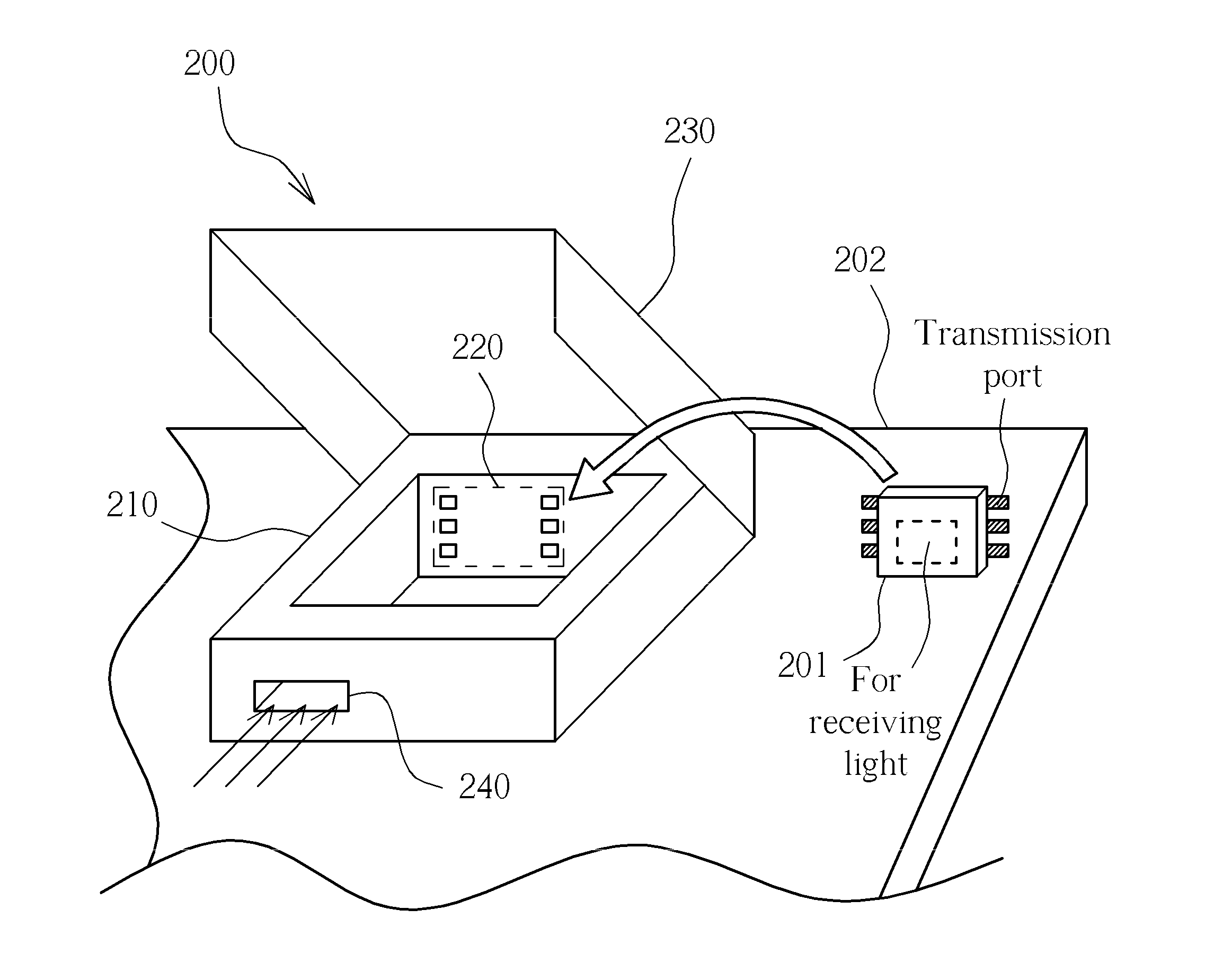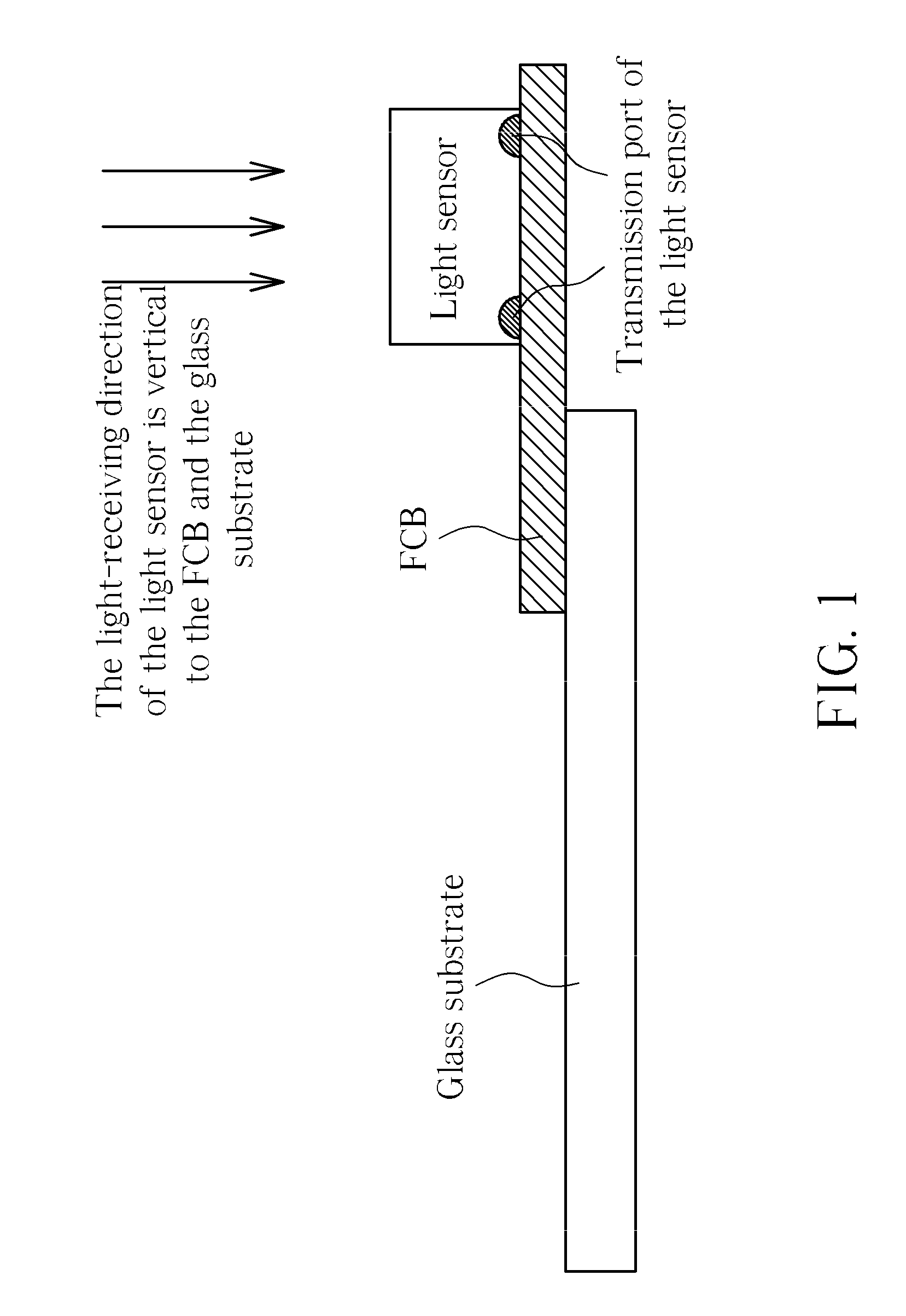Connector of connecting light sensor and substrate and method of fabricating light sensor
a technology of connecting light sensor and substrate, applied in the field of connecting, can solve the problems of limited light sensor light reception direction, inability of light sensor to detect if an indicating object contacts the display panel, and inability to control the yield rate of the process
- Summary
- Abstract
- Description
- Claims
- Application Information
AI Technical Summary
Benefits of technology
Problems solved by technology
Method used
Image
Examples
first embodiment
[0020]Please refer to FIG. 2. FIG. 2 is a diagram illustrating a connector 200 according to the present invention. In FIG. 2, the connector 200 is disposed on a substrate 202. The substrate 202 is a transparent substrate, e.g. a glass substrate or an ITO glass. The connector 200 comprises a body 210, a connecting port 220, a lid 230, and a light-receiving window 240. The body 210 has space large enough for containing a light sensor 201, and rotates the light sensor 201 so as to change the light-receiving direction to be parallel to the substrate 202. The connecting port 220 is contained in the body 210, and is coupled to the transmission port of the light sensor 201 so that the light sensor 201 is coupled to the substrate 202 through the transmission port of the light sensor 201 and the connecting port 220. The connecting port 220 may be realized by a plurality of L-shape golden fingers 221, as shown in FIG. 3 and FIG. 4. Each golden finger 221 comprises sections Li and L2. The sect...
second embodiment
[0021]Please refer to FIG. 5. FIG. 5 is a diagram illustrating a connector 500 according to the present invention. The operation principles and the structures of the connector 500, the light sensor 501, and the substrate 502 are respectively similar to those of the connector 200, the light sensor 201, and the substrate 202. Compared with the connector 200, the connector 500 further comprises a flexible printed circuit board (FPC) 550. The FPC 550 has a flexible-board connecting port 551. The flexible-board connecting port 551 of the FPC 550 is coupled between the connecting port 520 of the connector 500 and the substrate 502. Since, in the general fabrication of the flat display panel, the driving circuit of the display panel of is coupled to the substrate through an FPC, the fabrication of coupling the connector 500 to the substrate 502 through the FPC 550 only requires general fabrication facilities of the flat display panel.
[0022]Please refer to FIG. 6. FIG. 6 is a diagram illust...
PUM
 Login to View More
Login to View More Abstract
Description
Claims
Application Information
 Login to View More
Login to View More - R&D
- Intellectual Property
- Life Sciences
- Materials
- Tech Scout
- Unparalleled Data Quality
- Higher Quality Content
- 60% Fewer Hallucinations
Browse by: Latest US Patents, China's latest patents, Technical Efficacy Thesaurus, Application Domain, Technology Topic, Popular Technical Reports.
© 2025 PatSnap. All rights reserved.Legal|Privacy policy|Modern Slavery Act Transparency Statement|Sitemap|About US| Contact US: help@patsnap.com



